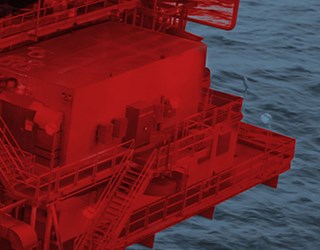NEWS The Benefits of Casing Rotation and Reciprocation in Cementing Operations
Casing rotation and reciprocation are widely recognized as best practices in well construction, significantly improving cement placement and zonal isolation. However, the effectiveness of these techniques depends on centralizers that allow the casing to rotate freely within them. Choosing the right centralization solution is critical to optimizing cementing performance, reducing risks, and ensuring well integrity.
Enhanced Cementing and Fluid Velocities
Casing movement—particularly rotation—improves cement placement by preventing channeling and mud contamination. As the casing rotates, it helps break up gelled mud and displaces it more efficiently, promoting uniform cement coverage around the casing. This enhances zonal isolation and reduces the risk of gas migration or fluid migration behind the casing. Additionally, reciprocation aids in reducing the risk of bridging, which can cause cement voids.
Casing rotation is especially crucial in formations with variable permeability, where poor cement bonding could lead to unwanted fluid migration. Ensuring proper mud removal in such formations reduces the likelihood of micro-annuli formation, improving long-term well integrity.
Rotating the casing within properly designed centralizers also increases annular fluid velocities. Higher flow rates lead to improved mud displacement efficiency, reducing residual mud film on the casing and formation walls. This effect is particularly beneficial in deviated and horizontal wells, where fluid movement can be more challenging.
Studies have shown that casing rotation can improve top-of-cement (TOC) placement by ensuring a more uniform cement sheath. This is particularly important in wells with extended laterals, where gravity can cause cement slumping and leave uncemented channels.
Minimizing Differential Sticking Risks
Differential sticking occurs when a pressure imbalance causes the casing to become stuck against the wellbore wall. Rotation reduces this risk by continuously changing the points of contact between the casing and the formation. This movement prevents the formation of static pressure seals and allows for easier casing movement, reducing costly non-productive time.
Additionally, using centralizers with low starting and running forces further minimizes the potential for sticking by ensuring smooth casing movement even in tight annular clearances. Proper spacing of centralizers, particularly in high-angle wells, helps distribute the load more effectively and reduces localized drag forces.
Managing Equivalent Circulating Density (ECD)
Equivalent Circulating Density (ECD) is a critical factor in wellbore stability, particularly in narrow-margin wells. Hemphill et al. (2028) demonstrated that casing rotation helps mitigate excessive ECD by reducing frictional pressure losses in the annulus. By keeping fluids moving and minimizing restrictions caused by gelled mud or cuttings accumulation, rotation helps maintain a more stable pressure profile, reducing the risk of fracturing weak formations.
Moreover, maintaining optimal standoff with the right centralization strategy prevents excessive localized pressure increases, which can contribute to lost circulation. Proper casing rotation also aids in distributing cement evenly, reducing the potential for fluid loss to weak formations.
Choosing the Right Centralizers
For casing rotation to be effective, centralizers must allow the casing to rotate freely while maintaining optimal standoff. Centek’s bow spring centralizers have been engineered and tested for over 20 years to support casing rotation without compromising performance. Their innovative design provides superior restoring force while minimizing drag, allowing for smooth, unrestricted casing movement.
Centek centralizers have been field-proven across a range of well conditions, including high-angle, deepwater, and extended-reach wells, demonstrating their reliability in supporting rotation. Operators using Centek centralizers have reported improved cement bond logs (CBLs), confirming enhanced zonal isolation and reduced cement voids. This underscores the importance of selecting the right centralization solution for long-term well performance.
The ability to rotate casing within Centek centralizers enhances cementing outcomes, promotes fluid displacement, and reduces risks associated with differential sticking and ECD fluctuations. With a track record of success, our technology continues to deliver the centralization needed to maximize well integrity and long-term production.
Additionally, field studies have shown that combining casing rotation with advanced centralizer placement modeling, such as Centek’s Latload software, can further optimize wellbore stability.
Conclusion
Casing rotation and reciprocation are proven methods for improving cementing outcomes, enhancing fluid velocities, and mitigating differential sticking. However, their success depends on selecting centralizers designed to support rotation while maintaining annular clearance. With Centek’s field-proven centralization solutions, operators can ensure that casing movement delivers the full benefits of improved cement placement and wellbore stability.
Incorporating real-time torque and drag monitoring while using rotating centralizers can further optimize casing deployment and prevent unexpected issues during the cementing process.
Case Studies and Further Reading
For real-world examples of casing rotation benefits, operators can refer to Centek’s documented field trials, showcasing successful cementing operations in challenging well environments.

